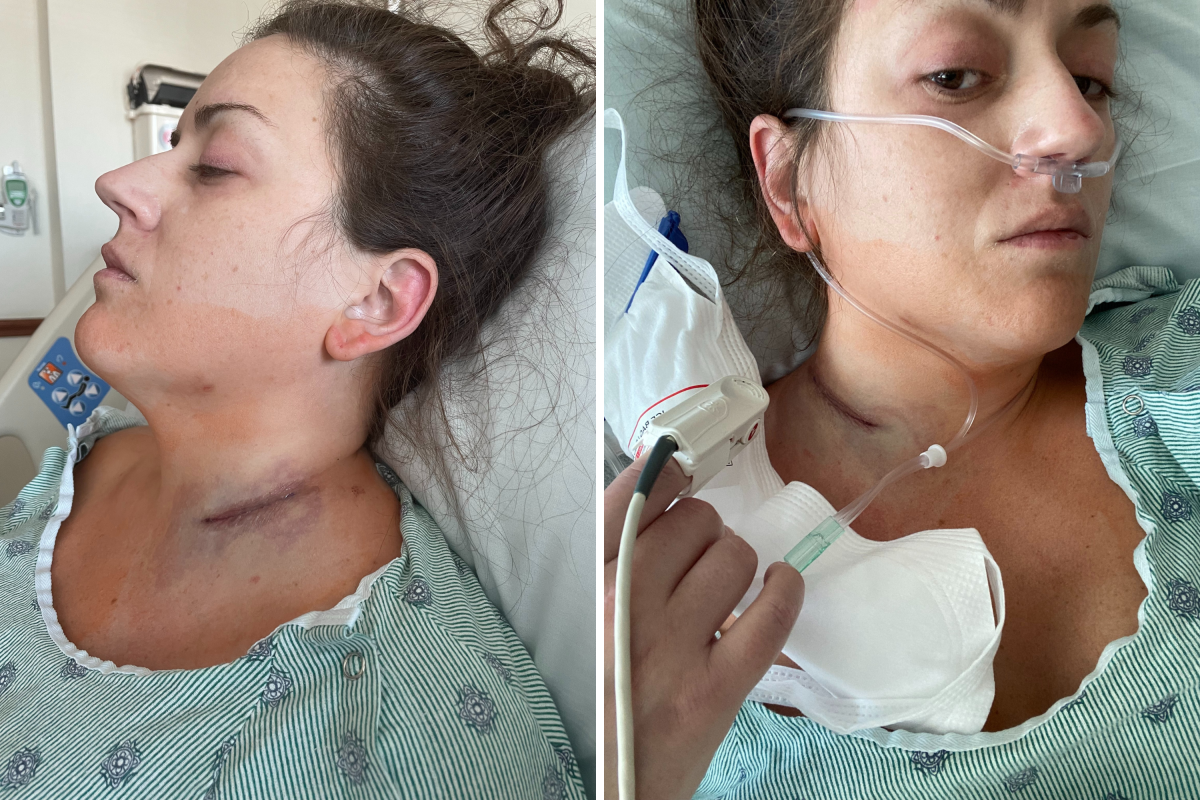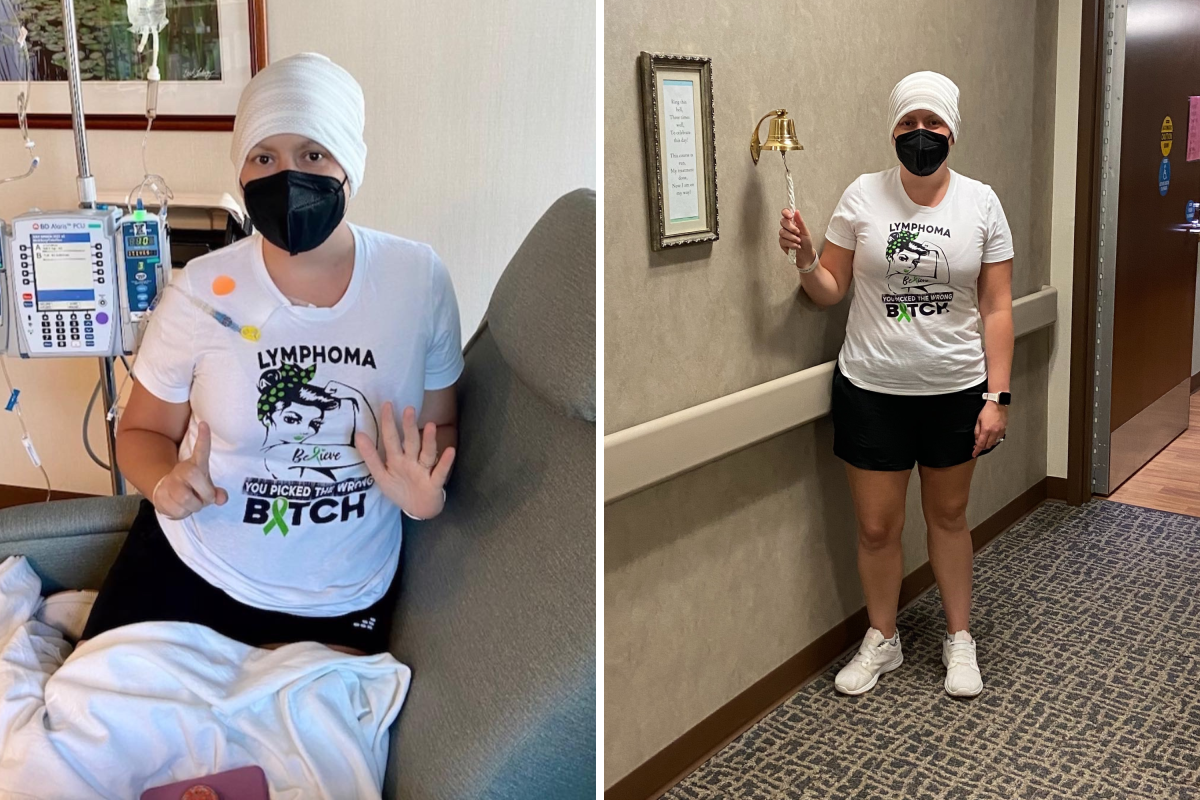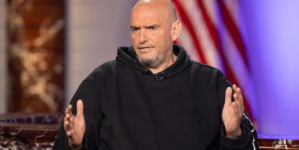-
Bruce Willis celebrated by wife Emma in poignant Father’s Day tribute - 13 mins ago
-
Who are the 10 best father-son sports duos of all time? - 20 mins ago
-
NY Giants’ Jaxson Dart Marked Down on Pressure List - 36 mins ago
-
2025 INDYCAR odds: Josef Newgarden favored to win at St. Louis - about 1 hour ago
-
Iranian retaliatory strikes kill several people in Israel - about 1 hour ago
-
John Fetterman’s Name Booed at Pennsylvania ‘No Kings’ Rally - about 1 hour ago
-
Immigration raids continue, sparking more anxiety - 2 hours ago
-
Missouri governor signs stadium aid package intended to keep Chiefs, Royals in state - 2 hours ago
-
French Tourist Arrested After Two Found Dead in Iceland Hotel - 2 hours ago
-
Kevin Costner, 70, explains why retirement isn’t in his plans - 2 hours ago
Woman Told She Had a ‘Migraine,’ Then Came Her Incurable Diagnosis
A woman suffering from chest pain and shortness of breath discovered that she had a rare and incurable cancer one month after being misdiagnosed with a complex migraine and panic attack.
In January 2022, Courtney Liniewski woke up in the night to a loud bang coming from inside her head. She managed to go back to sleep, but when she woke up for work as a crisis counselor at an inpatient psychiatric hospital, she noticed her face had drooped.
Her colleague brought her to the emergency room for a suspected stroke; however, her brain imaging and blood work came back fine. With a history of migraines and anxiety, she was sent back to her home just outside of Milwaukee.
The mom of two recently shared her story on TikTok (@cancercourtney), garnering over 208,000 views. Now aged 34, she told Newsweek: “It felt like an easy, familiar diagnosis. But I didn’t have a headache that day, which I found strange.”
Courtney Liniewski
“For about a month, I accepted the diagnosis and carried on with life.”
However, her symptoms worsened. She suffered from chest pain and was unable to walk up a flight of stairs without losing her breath.
“I remember thinking, ‘I really wish I could just get a chest X-ray.’ But I was scared to go back, afraid I’d be told again that everything was fine. That fear of wasting time or being a burden kept me from seeking help,” Liniewski said.
“I had severe back pain that would come and go, but was excruciating when it hit. I also lost hearing in my left ear each night, which I later learned was from a lymph node pressing on a vein that would cut off blood flow while I slept,” she said.
“My nose ran constantly like an open faucet. I had extreme fatigue, occasional night sweats, and significant weight loss, though I had recently started a medication that causes weight loss, so it was hard to tell what was causing what.”

Courtney Liniewski
In February 2022, she went on vacation. She told Newsweek: “The trip to Mexico truly saved my life. On the first morning there, I woke up with a large lump on my neck.
“My immune system was clearly reacting to travel or stress. I’ve always been prone to getting sick when I travel, but this time it was like my body finally showed me something. The lump was about 4.1 cm, and it is what led to my diagnosis.
“Without it, I wouldn’t have met the criteria typically associated with my type of cancer. I don’t fit the demographic, since it usually affects elderly white men.”
Liniewski was diagnosed with Grade 3B Follicular Lymphoma, a rare type of non-Hodgkin lymphoma that accounts for roughly 20 percent of cases in the United States.
It is typically a slow-growing condition that affects adults, with an average age of 60, according to the American Cancer Society. It often appears in multiple lymph nodes and can involve the bone marrow.
While the cancer usually responds well to treatment, it is difficult to cure, and therapy may be delayed until symptoms arise. Over time, it can transform into a more aggressive form, such as diffuse large B-cell lymphoma.
“Imaging then revealed a much larger mass in my chest, roughly the size of a grapefruit at 11.6 cm by 8.3 cm,” Liniewski said.
“Most follicular lymphoma is slow-growing and doesn’t require urgent treatment. But mine behaves more like a high-grade cancer. Without treatment, I would’ve died within months.
“I started chemo just 12 days after diagnosis, and that timeline saved my life,” she told Newsweek. “I had six rounds of R-CHOP chemotherapy. It’s a very aggressive and neurotoxic regimen.
“My ‘cancer-versary’ is in July, marking three years since diagnosis and remission. I’m currently on ‘watch and wait,’ and I’m monitored every three months with labs and scans. My cancer has a very high recurrence rate, so early detection is critical.
“If it returns, treatment will likely involve a stem cell transplant or CAR-T therapy,” she said.

Courtney Liniewski
“I do believe I had a complex migraine at that time, and I’ve had two total now. But I also think I was underdiagnosed. Given my history of anxiety and migraines, it felt like they stopped looking after the first assumption. It was also during COVID, and I was alone, scared, unsure, and not yet confident in my ability to advocate for myself.
“Plus, I had a terrible reaction to the medication they gave me in the ER, which added to the trauma. Now, I believe that migraine was actually a neurological warning sign—a red flag from my immune system that something deeper was wrong.”
Liniewski hopes her story helps others feel less alone and gives them the confidence to advocate for themselves.
“After my cancer diagnosis, I knew the initial assessment had missed everything. It felt like I had been dismissed too quickly and too easily,” she said.
“If something feels wrong, keep pushing. Get second, third, even fourth opinions.
“Don’t let fear or stigma silence you, especially as a woman with anxiety. We’re beingdiagnosed with cancer at younger and younger ages, and I don’t think the healthcare system has fully caught up.
“Use your voice. Be loud. You might save your own life.”
Source link































